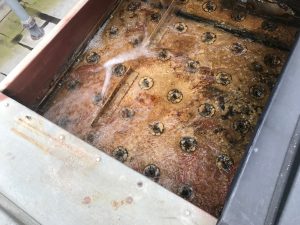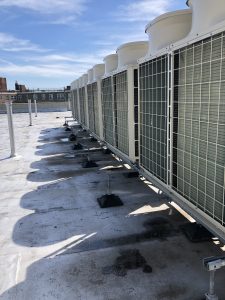This summer, don’t forget about Legionella Prevention!
Legionella Outbreaks in Recent History
As a reminder, Legionella bacteria can multiply and survive at temperatures ranging from 68 to 122 degrees Fahrenheit. As temperatures rise each year, an increase in incidents occurs nationwide, most often related to cooling towers that have not been properly maintained and inadequate actions preventing Legionella growth are taken. For example, in August 2015, an outbreak in the Bronx claimed 12 lives and sickened over 100. In 2017, there were at least four notable incidents within the United States, including 37 total cases of Legionnaires’ disease and 2 deaths. It is important to consider that the numbers may be biased low given that Pontiac Fever, a typical response to Legionella exposure, is practically identical with respect to symptoms to the much more well-known and publicized flu virus.
Legionella Laws from the New York State Department of Health
Legionella prevention is required per the New York State Department of Health (DOH) Legionella rule, effective July 6, 2016. This includes preparation of a Preventive Maintenance Plan, periodic Legionella-specific testing and inspections, registration of applicable units, and reporting to the DOH.
Where does Legionella come from?
Legionella bacteria naturally occurs in water and will multiply given the correct environment. Besides the temperature range listed above, the following factors greatly increase the likeliness of bacterial growth:
- Presence of scale, algae, dirt or biofilm on cooling tower surfaces
- Failure to maintain proper biocide dosing
- “Dead” zones in the system where warm water is trapped and cannot circulate properly
What types of air conditioning systems are susceptible? 
Any air conditioning system which makes use of a cooling tower or evaporative cooler (cooling units) is regulated under the DOH. These units contain open “basins” of warm water with exhaust fans that effectively create vapor mist; Legionella can only be transmitted via aerosolized water droplets. Its impact can be widespread as bacteria can travel at distances up to two miles from the source!
What are the first steps to making sure your facility is safe?
Before any major planning occurs, the first step should be an assessment of your overall cooling system. This will confirm the number and type of applicable cooling units.
Once the applicable cooling units are determined, the next step is preparing a Preventive Maintenance Plan in accordance with the DOH regulations. This includes a full description of the system along with sampling and emergency response procedures in case of a positive test result.
Need Help Getting into Compliance?
Walden has a team of Legionella prevention experts who can help you prepare your Preventive Maintenance Plan, stay on top of regulations, and protect your facility against worker illness and potential legal action by preventing Legionella growth. Please give us a call at (516) 624-7200 to discuss further!


